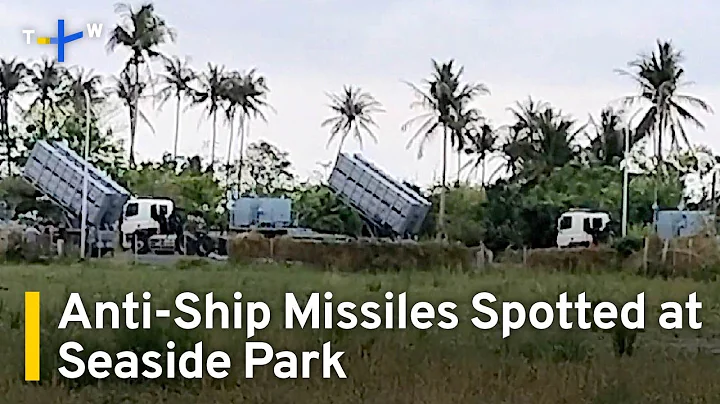[Text/Observer Network Wang Shichun] Taiwan's "Chinese Academy of Sciences" admitted on January 15 that on December 26 last year, the academy successfully test-fired the extended-range "Hsiung Feng-3" with a range of 400 kilometers off the coast of Jiupeng. The Taiwan military plans to enter the extended-range "Hsiung Feng-3" in 2021. Taiwan media clamored that the extended-range "Hsiung Feng-3" can cover the coastal areas of Guangdong and Zhejiang.
"Xiongfeng-3" increases its range by taking high-altitude ballistics, which makes "Xiongfeng-3" more susceptible to interception by medium and long-range air defense missiles. In addition, the "Hsiung Feng-3 mobile missile launch platform" planned by the Taiwan military is still in the state of development.

Data map: "Hsiung Feng-3" supersonic anti-ship missile Source: China Times Electronic News
According to a report from China Times Electronic News on January 15, Taiwan's "Chinese Academy of Sciences" admitted that on the afternoon of December 26, Taiwan's "Chinese Academy of Sciences" The Jiupeng base launched a Taiwan military active "Hsiung Feng-3" and a test extended-range "Hsiung Feng-3" respectively. The extended-range "Hsiung Feng-3" missile was launched between Orchid Island, Green Island and Hualien in eastern Taiwan. The airspace was circled at high speed, and after fully verifying the range, all targets were hit.
In this regard, the "Chinese Academy of Sciences" stated that the extended-range "Hsiung Feng-3" is expected to enter the mass production stage next year.

On December 26 last year, the Taiwan military designated a "no-fly zone" and the "extended-range" The Hsiung Feng-3 may have turned a corner midway to test the full-range capability. Source: Taiwan’s Coast Guard.
The Taiwan military’s “Hsiung Feng-3” range extension plan has been around for a long time. The maximum range of the “Hsiung Feng”-3 prototype missile It is about 130-150 kilometers, and the flight speed is around 2 Mach . In principle, the range of anti-ship weapons should be greater than the range of ship-based weapons to have room for use. Therefore, Taiwan's "Chinese Academy of Sciences" began to implement the so-called "Panlong Plan" in 2016, planning to strengthen the range and power of "Xiongfeng-3", and at the same time Develop a supporting mobile missile launch vehicle for the "Xiongfeng-3" to enhance the missile's maneuverability. In addition to increasing the range to 400 kilometers, the extended-range "Xiongfeng-3" has also increased the warhead from 120 kilograms to 200 kilograms, which can effectively deal with medium-sized surface ships of the destroyer level.

The "Hsiung Feng-3" mobile launcher displayed by the Taiwan military is still under development.
However, for a missile with a backward architecture like the "Hsiung Feng-3", it is necessary to modify the compression ignition ramjet engine or enlarge the missile body. All are unacceptable. The range of the extended-range "Xiongfeng-3" can only be greatly extended by increasing the trajectory. India's "BrahMos" supersonic anti-ship missile needs to cruise at an altitude of 15,000 meters to reach a maximum range of 280 kilometers. The flight altitude of the slightly larger Xiongfeng-3 will also remain above 15,000 meters.
The higher flight altitude also further reduces the penetration capability of the "Xiongfeng-3". For the Xiongfeng-3, which has a flying speed of only Mach 2, the extended-range "Xiongfeng-3" may be one of the few full-range models in the world. The ballistics are perfectly within the interception envelope of HQ-16, HQ-9B, HQ-10 and "Wanfagun" anti-ship missiles. At the same time, the "Xiongfeng-3" mobile launch vehicle is still under development. This allows the Taiwan military to still only use fixed positions to launch the "Hsiung Feng-3" on land.

On December 26, the 23rd Type 052D destroyer and the 6th Type 055 destroyer were launched on the same day.
Although the penetration and survival efficiency are worrying, the extended range "Xiongfeng-3" still brings certain strategic significance. Taiwanese media were complacent after the test launch, claiming that the "Hsiung Feng-3" was deployed in the northern, southern and eastern mountainous areas of Taiwan. Its fan-shaped firing range could not only block the entire Taiwan Strait, but also extend to the coasts of Taizhou, Zhejiang and Shanwei, Guangdong. It could be used during wartime. Blocking the mainland's East China Sea and South China Sea fleets from communicating with each other can even deter the intervention of the PLA aircraft carrier "Liaoning".
Taiwan's "Chinese Academy of Sciences" has been making continuous moves recently, frequently testing new types of ammunition derived from the Tiangong and Xiongfeng series. The "Chinese Academy of Sciences" stated that the sea-based "Tiangong-3" air defense missile has completed test firing in the MK41 vertical launch system deployed on land at the Jiupeng base.
It is understood that Taiwan has purchased two sets of MK41 vertical launch systems from the United States. One is deployed at the Jiupeng base, and the other is loaded on the Taiwan military's "Kaohsiung " ship for testing.The "Chinese Academy of Sciences" claimed that it has been confirmed that the sea-based "Tiangong-3" can be launched using the MK-41. Taiwan's "Chinese Academy of Sciences" will use this standard to develop the vertical launch system required for the sea-based "Tiangong-3". On the so-called "National Ships Made in China" project.

The "Kaohsiung" landing ship was converted into a test ship. In addition to testing the MK-41 vertical launch system, it also tested the passive phased array radar (PESA). Source: China Times Electronic News
This article is an observer This is an exclusive article on the Internet and may not be reproduced without authorization.





















